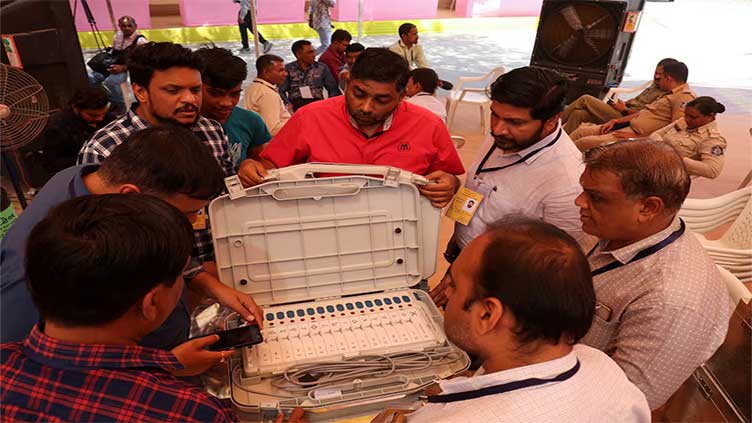India's Lok Sabha election 2024: What are electronic voting machines?

World
It is a thick, rectangular device used to electronically record votes cast in elections
(Reuters) – India has been using electronic voting machines (EVMs) extensively since 2000 to record votes in the world's largest election.
This year, voting in the seven-phase election begins on April 19 and votes will be counted on June 4. Prime Minister Narendra Modi is widely expected to win a third straight term.
Here are some details about the EVMs, which have drawn criticism that they are vulnerable to tampering:
WHAT IS THE EVM?
Includes a thick, rectangular device used to electronically record votes cast in elections. Voters need to press one of the blue buttons placed against the serial number, name and symbol of the candidate of their choice, apart from the option of "none of the above".
An EVM has three units - a ballot unit, a control unit for the officer-in-charge to ensure a voter is able to vote only once, and a voter-verifiable-paper-audit-trail (VVPAT) unit, which produces a paper slip that is visible to the voter via a transparent screen for about seven seconds before it gets stored in a sealed drop box.
The control unit is placed next to the officer-in-charge while the other two units are kept in a voting compartment for voters to make their choice privately.
The whole setup is without any wired or wireless connectivity outside the system.
HOW MANY VOTES AND CANDIDATES?
Each ballot unit can include 16 candidate options including "none of the above". A total of 24 such units can be connected to a control unit, which means that one unit can cater up to 384 candidates, should there be so many candidates from one seat.
An EVM system, which can record up to 2,000 votes, runs on battery or power-packs supplied by its makers, government-run Bharat Electronics and Electronics Corp of India.
The whole setup costs nearly 34,000 rupees ($408) and can work for about 15 years.
WHEN WAS IT FIRST USED?
EVMs were first used in India for a by-election to the Parur assembly seat of the southern state of Kerala in 1982. It was deployed widely in the country from 2000.
Several other countries have tried such machines in limited ways.
WHY EVMs?
The Election Commission says EVMs help overcome issues like invalid votes due to improper marking or ink smudging in paper ballots and stuffing of ballot boxes with spurious votes or pre-marked ballot papers. It also says that manual counting of ballots is "prone to errors and mischief and takes a lot of days".
An EVM does not allow more than four votes per minute, which the Commission says makes it difficult for any party to capture a booth momentarily to inflate their numbers without drawing the attention of security forces.
If an EVM goes out of order during polling, then the full set is replaced in the presence of polling agents appointed by candidates. The Commission says the votes recorded until then remain safe in the memory of the control unit and the VVPAT unit.
WHAT IS THE CONTROVERSY?
The Election Commission says the paper slips, which were introduced in the Noksen assembly constituency of the northeastern state of Nagaland in 2013, can be used to verify the electronic vote count in case of a dispute. Opposition parties say all paper slips should be counted separately to rule out hacking of the machines or any other manipulation.
The Commission says "there is no question of EVMs being programmed several times, or manipulated by connecting to a cellphone, Bluetooth devices, replacing part of it or through any other form of manipulation".
Indian courts have largely endorsed EVMs.



